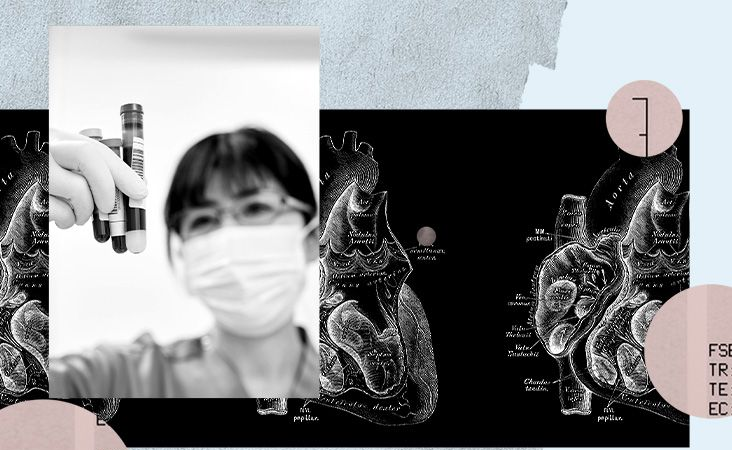
Roughly
A new study from researchers at Uppsala University in Sweden identifies blood biomarkers that could be used to provide an “early warning” system that may allow time for preventive measures before a first heart attack.
Researchers are also working on an online tool that can be used by anybody who knows their current LDL and HDL cholesterol numbers, waist circumference, height, and a few other details, which can predict the likelihood you will have your first heart attack within the next six months.
The authors of the study examined blood samples from 169,053 European individuals without prior cardiovascular disease. They compared the blood of 420 people who experienced their first heart attack within six months of its collection against the blood of 1,598 healthy individuals.
About 90 molecules were identified in the study as biomarkers of an imminent heart attack.
The study is published in
Of the 91 identified molecules, the study’s senior author, Dr. Johan Sundström, said, “These could be root causes or mediators in causal pathways — or they could be innocent bystanders — and they would all need further research to determine which is which.”
The new tool — being based on the type of blood test one would get at a checkup — does not actually involve the newly identified suite of molecules.
Dr. Sundström recalled, “We were initially surprised to see that none of the newly identified molecules could beat the already available ones. But that is good news, as those markers are readily available in healthcare today.”
Of the 91, brain natriuretic peptide was the molecule that was most consistently associated with an imminent myocardial infarction. “It is a molecule,” said Dr. Sundström, “that is produced only by the heart muscle cells, as a response to excess strain to the heart.”
”[Brain natriuretic peptide] is a diuretic molecule, so it is quite amazingly organized that the heart itself can send out a cure for volume overload, increased diuresis, [production of urine],” he said.
Cardiologist Dr. Jayne Morgan, who was not involved in the study, pointed out the weak association the study found between a CACS (
Dr. Sundström noted that the test is designed for the research community, and potentially healthcare workers, for now.
Cardiologist Dr. Cheng-Han Chen, who was also not involved in the study, noted, “We do not have a way to evaluate for ‘imminent risk’ as this study is attempting. Such a test could help us identify the patients at greatest need for further discriminatory testing.”
“We plan to allow people to compare their own risk to an average person of the same age and sex, and make the web interface more available to the public,” said Dr. Sundström.
Dr. Morgan noted that the study constitutes very preliminary data.
“Although age is a predictive variable,” explained Dr. Morgan, “at what age should screening begin as well as how often screening should be repeated are yet to be determined. This is also true of male sex, waist circumference, etc. as predictive features of the nomogram.”
The test currently also includes the ability to enter MIMI/UKBB values. These are abbreviations for “Markers of Imminent Myocardial Infarction” and the “UK Biobank,” respectively. They are included to help the tool take into account the medical populations to which individuals belong based on existing anonymized data.
“The MIMI,” said Dr. Morgan, “is a cohort of ‘cardiovascular disease-free individuals in six European general population-based cohorts who developed a myocardial infarction within the first six months after the baseline examination.’ The UKB is a large biomedical database that can be curated and accessed by researchers.”
Dr. Morgan also noted with interest that the tool does not include
Dr. Chen described how often a person might get checked using the new tool if it is adopted. He noted that for otherwise healthy individuals, his practice currently checks cholesterol every four to six years.
“However, he said, “people at increased risk for cardiovascular disease should have their levels checked more often, at least once a year. This proposed testing model, if eventually incorporated into clinical practice, may require blood draws every six months.”
Dr. Sundström told Uppsala University News that the period leading up to a heart attack is crucial. He gave some examples, such as the risk of a heart attack doubling during the month after a divorce, how the risk of a fatal cardiac heart event increases five-fold during the week after a cancer diagnosis.
If there are indications that a heart attack is imminent, said Dr. Morgan, an “intervention” type of prevention would be warranted.
In dire cases, said Dr. Morgan, “PCA (percutaneous coronary angioplasty) would be the gold standard.”
Where there is a less imminent threat, or a “warning, then aggressive measures such as diet, weight loss, medications, chronic disease management and control could possibly be undertaken,” Dr. Morgan said.
Share this article
OUR BRANDS







